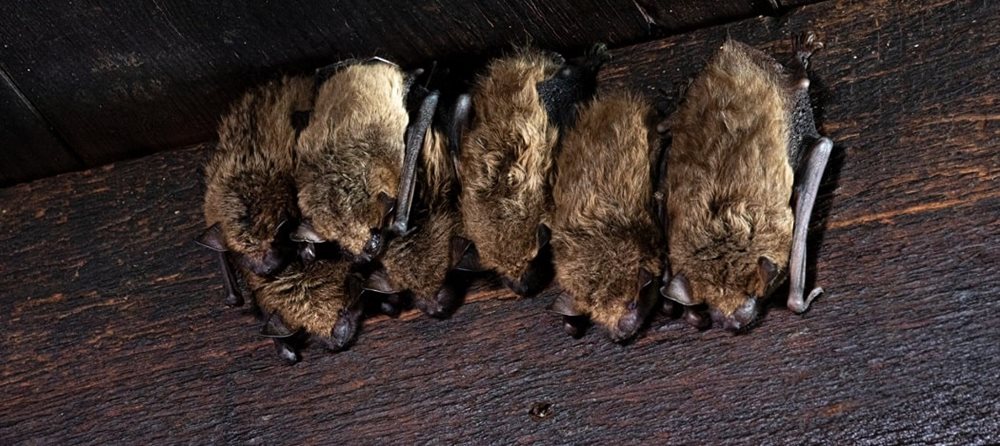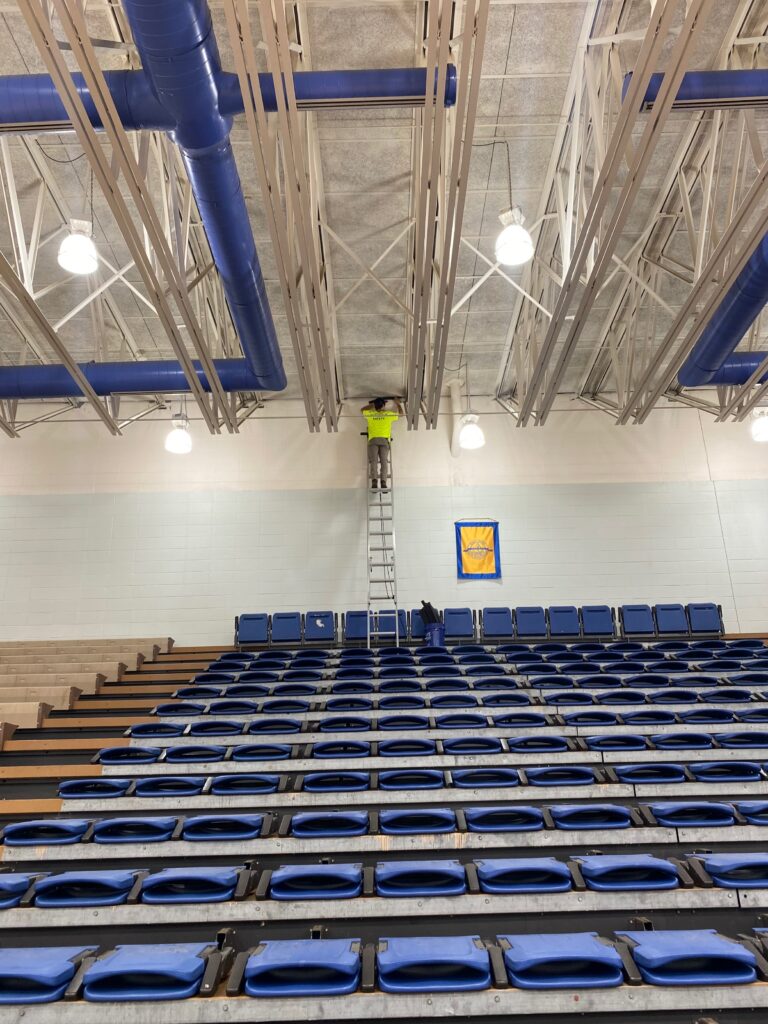
No parent wants to read a headline like, Hundreds of Bats Inside New Hampshire Elementary School, after dropping their children off at school. In this incident, it was discovered that bats were found hibernating in many places, hiding in poles and hanging from the ceilings inside the school building. Finding bats in schools is never okay, and the school was closed until a professional wildlife service could remove them.
Why Are Bats in Schools Common?
Schools can be a target for bats looking for comfortable quarters:
- As populated areas spread to accommodate growth and natural habitats are lost, wildlife, such as bats, seek man-made structures for shelter.
- Schools in suburban or rural areas are often some of the tallest buildings in town, and bats like heights.
- Many schools have easy entry points, such as vents, open windows, loose flashing around chimneys, and gaps in roofing.
- Bats roost where food is readily available, and schools have outdoor fields with a water source that attracts insects, a staple of a bat’s diet.
Why Are Bats in School a Big Problem?
Although bats play an essential role within the environment, such as keeping the mosquito population at bay and pollinating essential plants, they pose a huge health risk to students and staff in schools. If bats are discovered, it can close down a school.
Rabies
Bats are the most significant source of rabies in the United States and can transmit the disease through a bite, scratch, or contact with their saliva. You cannot always tell if a bat has rabies by observing it, as they do not always act strangely. Things to look out for include bats that are on the ground and unable to fly, as well as ones that are active during the day.
Disease Transmission from Guano
When bat guano dries and is then disturbed, it can release fungal spores into the air that, when inhaled, can cause serious diseases such as histoplasmosis, Ebola, and coronaviruses. If there is a large amount of guano, spores have the potential to be distributed through the school’s HVAC system.
School Damage
A colony of bats within a school can cause considerable damage to its structure. Their urine and feces accumulate, staining walls and rotting wood beams. Bat urine smells strongly of ammonia and can be overwhelming in large amounts.
Single Bat Removal

When one bat is seen in a school, it may have just gone astray, or it may be a sign that a bat colony is present. Having the students, the teacher, and other staff leave the room is vital. The room should be secured so the bat cannot travel to different parts of the building, and the school district’s bat management policy should be followed. Most schools have an integrated pest management system with a local wildlife removal company that will come and humanely conduct bat removal. Untrained school personnel should not attempt to handle a bat.
Bat Colony Removal
Getting rid of bats requires proper training, experience, and personal protection equipment. Bats are protected by the Federal Endangered Species Act of 1973 and the Fish and Wildlife Coordination Act of 1956. Also, most states have laws against killing, hurting, or moving bats. In spring and summer, bats give birth in groups called maternity colonies. Since these pups are helpless until they can fly and hunt, they cannot be harmed.
Once fall comes, some of these bats, depending on the species, will migrate or hibernate. This is the time to install a bat valve or one-way door so bats can fly out at dusk but cannot get back in. Netting will help keep them from crawling back in through tiny gaps.
Once the bats are gone, all gaps and holes need to be sealed to prevent another infestation. In addition, all vents should have screens covering them. Ongoing prevention is important because some bat species will return to the same location year after year. Bats cannot create entry holes and can only get in using existing openings and gaps.
Bat Management Plans for Schools
While not mandatory, schools should have a bat management plan in place that includes a relationship with a wildlife specialist company that can oversee annual inspections, ensure exclusion methods are appropriately maintained, and conduct bat removal if necessary.
A bat management plan should include:
- Methods for preventing contact with bats. These should include professional exclusion methods and practical steps, such as keeping gym doors closed and window screens in top condition.
- Faculty and staff training so building occupants know to isolate the area and never approach a bat. No employees should attempt bat removal. Call a professional.
- How to respond to a bat bite and how to have the bat tested by a Department of Health lab.
- The possibility of installing bat houses to keep the mosquito population down and bats living in more appropriate quarters.
Keep Bats Out of Schools
Schools should be bat-free zones. Building a partnership with a wildlife removal company such as Critter Control is imperative. Critter Control has over 40 years of experience with bats and wildlife invasions. Critter Control knows how to humanely and effectively remove bats in schools and can implement a program to keep them out. Call Critter Control today to start or update your bat management plan at 1 800-CRITTER.
This information was reviewed by Meg Pearson and Thomas Ward.
Covering a story about bats in school? Contact an expert at Critter Control.
- Baby Bats
- Bat Bites
- Bat Facts & Myths
- Bat Guano – Identification & Removal
- Bat Maternity Season
- Bat Noises and Sounds
- Bats & Rabies
- Watch How Bat Removal Works
- Bats in Chimneys
- Bats in Roofs
- Bats in the Attic
- Bats in Trees
- Bats in Walls
- Dead Bats
- Bat Diet & Feeding Schedule
- Do Bat Deterrents Work?
- How to Get Rid of Bats in Attic
- Is bat exterminating legal?
- Do Bats Hibernate?
- Types of Bats
- What Does a Bat Look Like?
- Bat Habitats and Infestations
- Bat Blindness & Echolocation